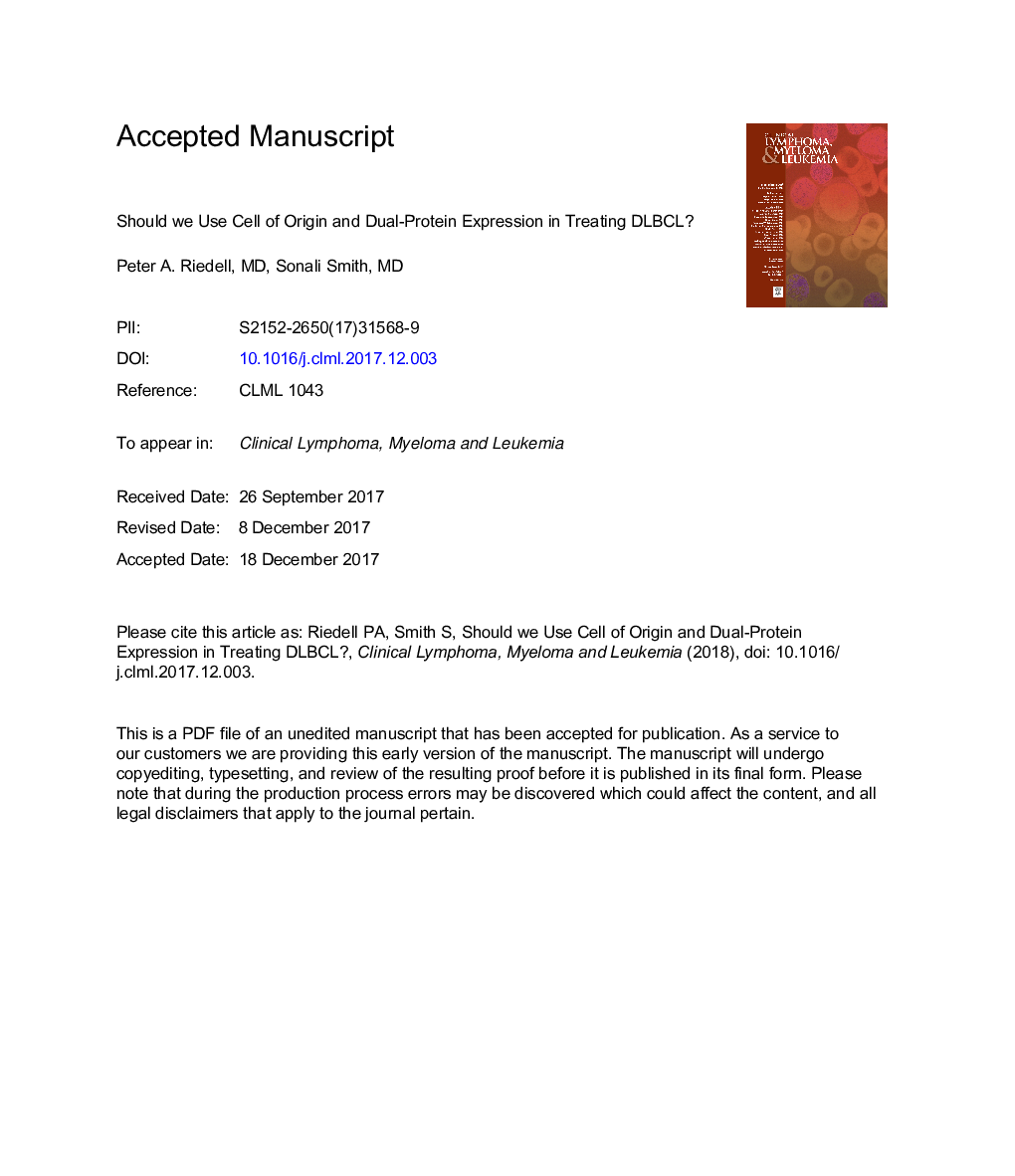| Article ID | Journal | Published Year | Pages | File Type |
|---|---|---|---|---|
| 8615605 | Clinical Lymphoma Myeloma and Leukemia | 2018 | 17 Pages |
Abstract
Treatment outcomes in diffuse large B-cell lymphoma (DLBCL) following standard R-CHOP (rituximab, cyclophosphamide, doxorubicin, vincristine, and prednisone) therapy is highly variable and dependent on a number of clinical, biologic, and genetic features. The identification of molecular heterogeneity via gene expression profiling dichotomizes patients based on the cell of origin (COO) model into germinal center B-cell-like (GCB) and activated B-cell-like (ABC) subsets, with ABC-DLBCL having a worse outcome. Along with the COO classification, other molecular phenotypes have also been identified, further highlighting the clinical and biologic complexity of this disease. Double-hit lymphomas, with concurrent chromosomal translocations of the MYC and BLC2 genes, or less commonly MYC and BCL6 genes, are associated with an aggressive clinical course and adverse outcomes when treated with R-CHOP. Furthermore, dual overexpression of MYC and BCL2 proteins has emerged as an important adverse prognostic factor, can be present through different mechanisms in both GCB and ABC subsets, and further complicates treatment considerations. Studies investigating the biologic underpinnings of these diverse subtypes have revealed a number of novel targets, which may provide therapeutic benefit. Moving forward, clinical trials focusing on molecular subsets of DLBCL, and incorporating rational targeted agents, will ideally lead to improved outcomes and allow a more personalized treatment approach. This review will focus on emerging data regarding DLBCL management based on either COO or dual overexpression of MYC/BCL2 proteins.
Related Topics
Health Sciences
Medicine and Dentistry
Anesthesiology and Pain Medicine
Authors
Peter A. Riedell, Sonali M. Smith,
